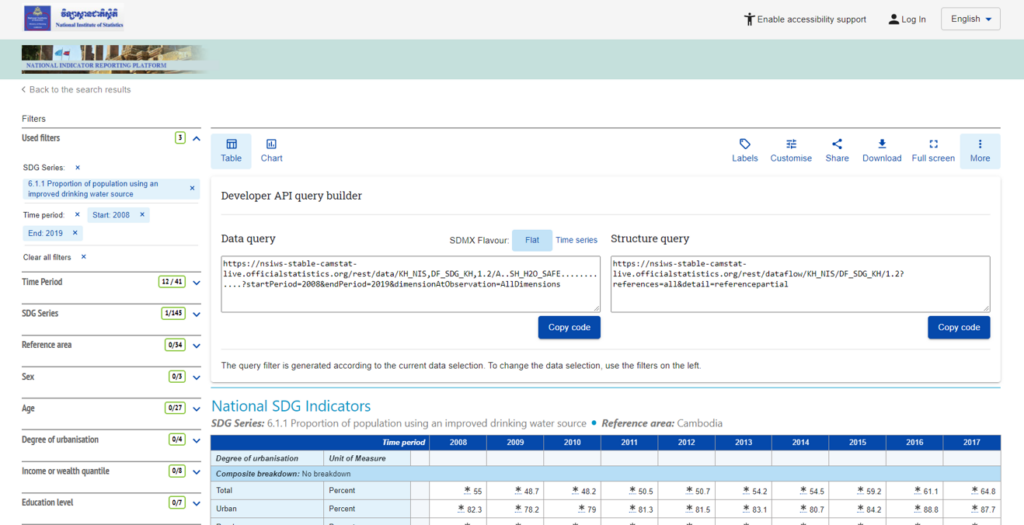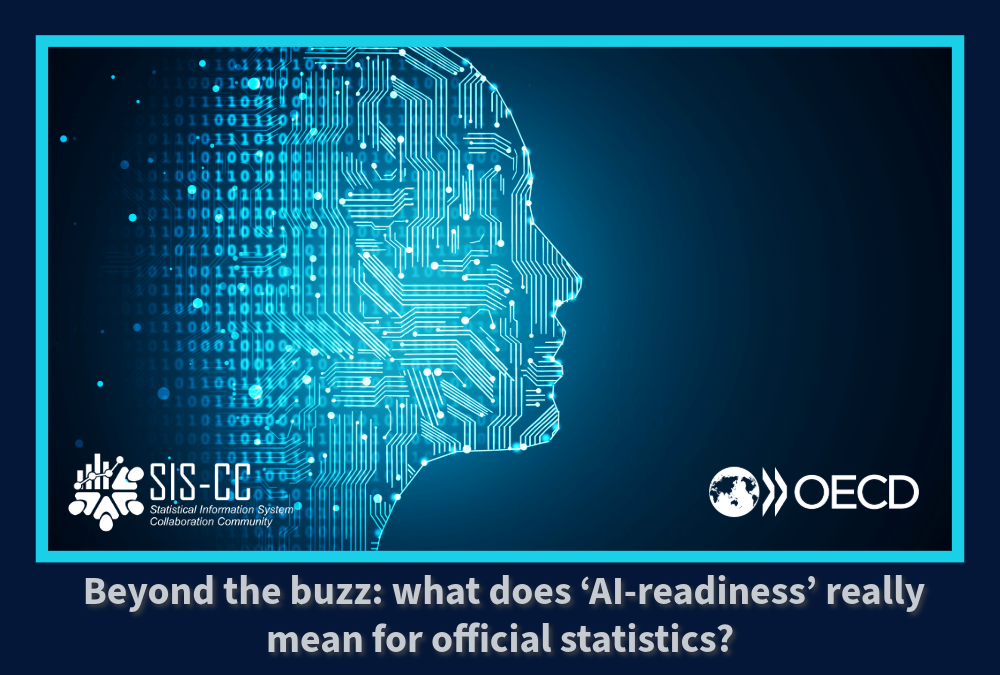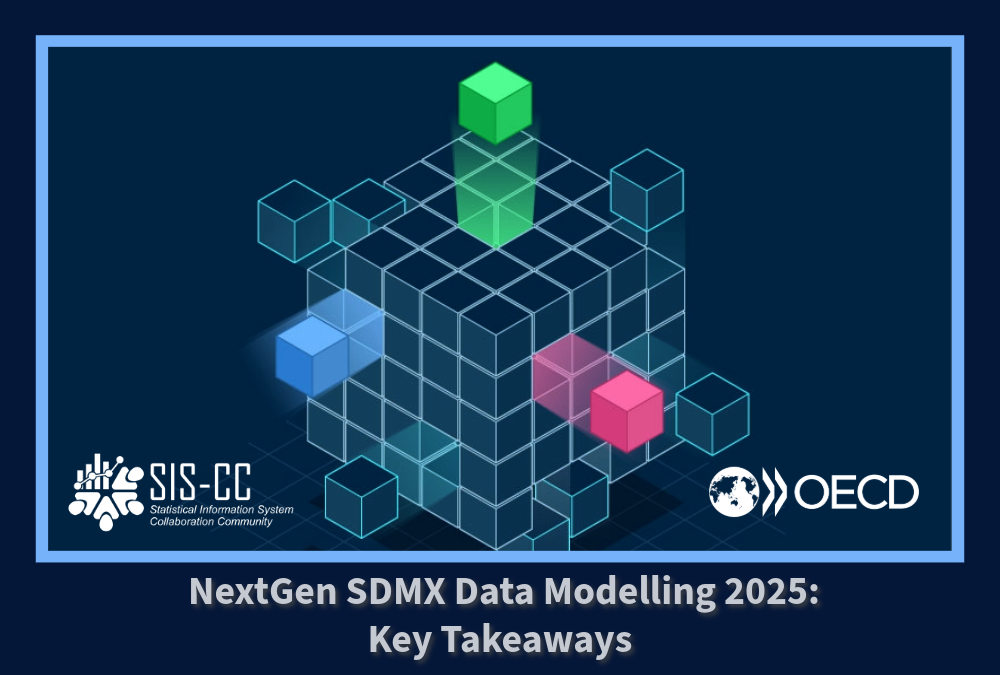In 2020, the National Statistics Institute of Cambodia (NIS), OECD, UNSD and the UN Global Working Group on Big Data for official statistics (GWG) joined forces to move CamStat to the cloud-based United Nations Global Platform (UNGP). Experts from ONS/UK, Statistics Netherlands, ABS and UNSD, as well as UNESCAP and UNICEF, provided valuable in-kind contributions to migrate CamStat from its temporary home on an SIS-CC partner cloud environment to a production-ready environment at UNGP.
This work was completed at the end of October 2020, with 57 datasets, 898 indicators, and approximately 170,000 observations migrated to the new home. The cloud environment at UNGP, has been configured to provide high availability and scalability, while technical support is provided by UNSD and other members of the UN GWG Community.

The United Nations Global Platform (UNGP) is a collaborative environment of the community of official statistics which provides frictionless access to cloud-based services, several Big Data sources, methods services and developers services. UNGP is maintained and further developed by the experts of the UN Global Working Group (GWG) on Big Data for official statistics and is jointly managed with the Global Partnership for Sustainable Development Data. Projects and training activities using UNGP are initiated and driven by the GWG task teams and by the Regional Hubs of UNGP in Brazil, China, Rwanda and the UAE.
Following the successful set-up and configuration of CamStat on the UNGP, only made possible with support from and utilising the open source .Stat Suite project, and synergies and cooperation between the SIS-CC and UN GWG Communities, the .Stat Suite on the UNGP can be made available to other countries as a Software as a Service (SaaS) model. The platform allows countries to easily and quickly establish a cloud-based data warehouse in support of statistical dissemination and reporting, and facilitate the automation of the production chain using SDMX and other international standards.


